Cadok DAWIDZON
Our names are Anna, Kaja, Judyta, Kacper and Katarzyna. We are students in the literature stream at the Lyceum Międzynarodowego Liceum “Paderewski” High School in Lublin, Poland. Our history teacher, Anna Nadolska, encouraged us to participate in the “Convoy 77” project.
1. Family tree

Cadok’s family tree, which we reconstructed from archived documents in the index of registers for the years 1904-1914.
2. Birth certificate
Thanks to the kindness of archivist, together we were able to find Cadok Dawidzon’s birth certificate in the Rabbi’s book, as part of archive no.1753
It was the year 1912, in winter, when snow lay all around. It was the 8th or the 21st of January. Before the First World War the Kingdom of Poland used two calendars, Julian and Gregorian, in its official documents, hence the 12-day difference. In a house at 456, Ruska Street, a child came into this world, a boy, who was named Cadok.
3. Parents
Cadok’s parents were Chaim Dawidzon and Toba Dawidzon, née Helfman.
We managed to find Chaim and Toba’s marriage certificate. They were married on January 13/26, 1904. Attached to the marriage certificate was information on the wedding banns and Chaim Dawidzon’s “attestation of identity”, i.e., a witness declaration rather than his birth certificate. In the absence of a birth certificate or the impossibility of issuing a copy, the identity of a person was often confirmed on the basis of witness statements.
Chaim’s parents were Lejzor Eli and Łaj Gitli and Toba’s parents were Moshka and Perla Helfman. Chaim’s father was a clerk.
4. Schooling
Unfortunately, we were unable to find out anything about Zlata’s education because Jewish school records no longer exist. We had hoped to learn something from the records from Lublin’s public schools, but they were sent to the archives department in very poor shape. Among other things, the daily roll call registers and class lists were missing. The chances of retrieving such information were therefore negligible.
5. Marriage certificate
The exact date is unknown, but the marriage probably took place in the years 1930-1936. Two young people in love, Zlata Waldberg and Cadok Dawidzon, got married. It is possible that they did not declare their relationship, which was a common occurrence in the Jewish community, or that they got married in France, because all trace of the marriage certificate seems to have been lost.
6. Population registers
Unfortunately, Lublin’s pre-war population registers, which were called “books of the permanent population”, no longer exist. They were destroyed during the bombing of the city during the Second World War. In the archives we find only partially salvaged registers from the 19th century, opened in the years 1839-1840 and in 1865, where the inhabitants of Lublin were registered until about 1890 (Attachment No. 5).
From the information in the birth certificates, we established that the Dawidzon family was originally from Kazimierz Dolny and that they still lived there, in house no. 50. Unfortunately, the population registers of this town no longer exist either, so it is impossible to search further in this direction.
7. Departure for France
We consulted records of passports issued in the years 1925-1929 and 1932-1939 (records for the years 1930-1931 are missing), as well as passport applications, few of which were kept.
We found neither Cadok Dawidzon nor his wife in them. They may have left before 1925 or in the years 1930-31.
We did, however, find records for Bina Fajga Dawidzon and Judyta Dawidzon, who obtained their passports to France in 1929 (file 551, pp. 371-372). We found that these two people were originally from Kazimierz Dolny and lived at 36, Grodzka Street in Lublin. It is possible that they were distant relatives of Cadok. They may have left to join a relative who had moved to France earlier on. At the time, France was not a popular destination country for economic migrants, so it is unlikely that this is a coincidental surname match.
8. Life in France
Information about Zlata’s life in France was gathered by students of the René Goscinny French High School in Warsaw. Additional information about the arrest of Zlata and her husband was provided by Mr. Serge Jacubert.
Before the war, Cadok lived with his wife Zlata in the city of Lyon, in an apartment he rented from 1937 to 1944. The apartment rental was confirmed by Jean Lefort, the Property Administrator, who also provided the name of the street, rue Camille Desmoulins, where Cadok lived. This shows that Cadok left for France before 1937. He was involved in sales. However, thanks to some personal documents that we managed to obtain, we also found information on a second source of income, the manufacture and sale of fur garments. He was therefore a furrier by trade. Cadok succeeded in acquiring French nationality on December 24 or 28, 1938.
On June 22, 1944, the couple heard someone knocking on the door of their modest apartment in Lyon. Gestapo agents entered their building in search of conspirators or resistance members working against the German occupiers. They were Rywka Skorka, whose French name was Régine Jacubert, and her brother, Yerme Skorka.
According to the information in their possession, there should have been a conspirator present in the building where the Dawidzons lived. The Germans searched the entire apartment building, but they found nothing and no one connected to the Resistance. However, this did not prevent Zlata and Cadok from being arrested, even though there were no pending legal proceedings against them at the time. The couple was separated. Shortly after his arrest, on June 31, 1944, Cadok was transferred to Drancy. After three days, on July 3, 1944, it was decided that he should be interned in the Auschwitz concentration camp. Records show that he arrived there on August 2, 1944. He must have spent about two months there, because on October 5, there is a record of him being in the Stutthof camp. [Saut de retour à la ligne]
According to information from the Interdepartmental Director of Veterans and War Victims, Cadok Dawidzon was interned again on 6 April 1945 at the Dachau camp. His was subsequently detained in the Natzwiller camp, where he was imprisoned on 28 May 1945. His prisoner number was I 49030.
We were also able to access Cadok’s medical records, which enabled us to find detailed information about his health. The file dates from the time he was detained in the Dachau camp. On one page, we read that he was assigned to the category of “racial deportees”. As for the “military position” section, it says “demobilized”. Another sheet gives us information on his weight, which was 120 pounds (54 kg). This is hardly surprising, given the time he had spent in the camps. At the time, he did not have any infectious or parasitic diseases, but notes and examination results confirmed that he was suffering from bronchitis.
After the liberation, he lived with his wife in Paris. When they were reunited, they moved to 32 rue Blancs-Manteaux in the 4th district. Like his wife, he applied for the status of political deportee, although it is not known if this request was ever granted. After the war, Yerme Skorka, a member of the resistance movement who had been wanted by the Gestapo, tried to contact Cadok, but to no avail.
Records found relating to the Dawidzons

Attachment No. 2 – Cadok’s birth record in the Rabbi’s book
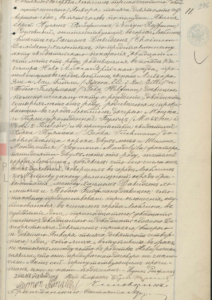
Attachment No. 3 – Marriage record of Chaim and Toby Dawidzon, Cadok’s parents
Attachment No. 4– Official witness statements confirming Chaim Dawidzon’s identity
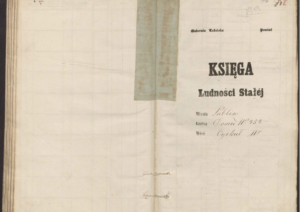
Attachment No. 5 – The “book of the permanent population”

Attachment No. 6 – Passport application for Bina Fajga Dawidzon

Attachment No. 7 – Passport application for Judyta Dawidzon
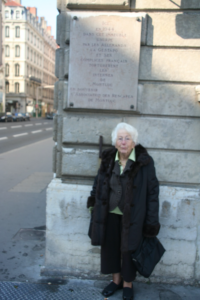
Attachment No. 8 – The building where the Gestapo interrogated Cadok and Zlata Dawidzon. The person in the photo is Regine Jacubert, a member of the resistance movement, for whom the Gestapo were searching when they arrested the Dawidzons.
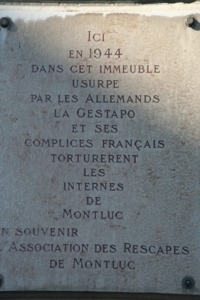
Attachment No. 9 – Plaque commemorating the internees at Montluc
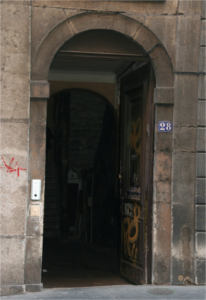
Attachment No. 10 – Rue de l’Annonciade 28, where Cadok Dawidzson lived and was arrested with his wife, Zlata
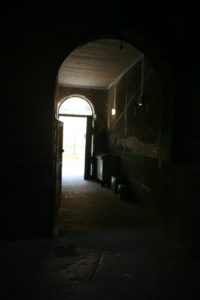
Attachment No. 11 – The building at 28, rue de l’Annonciade

Attachment No. 12 – Town plan of Lublin, dated 1912

Attachment No. 13 – Application for an identity card for Dawidzon Chana Łoja

Attachment No. 14 – Application for an identity card for Dawidzon Abus Abram
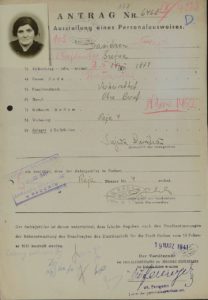
Attachment No. 15 – Application for an identity card for Dawidzon Szejwa
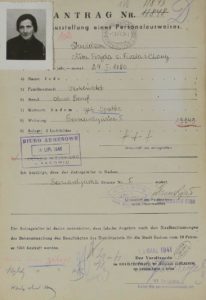
Attachment No. 16 – Application for an identity card for Dawidzon Ałta Frajda
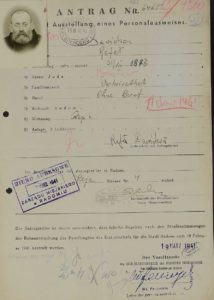
Attachment No. 17 – Application for an identity card for Dawidzon Rafał
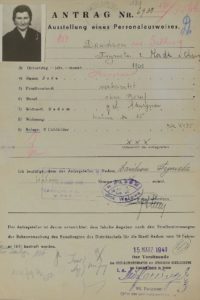
Attachment No. 18 – Application for an identity card for Dawidzon Frymeta

Attachment No. 19 – Application for recognition of Cadok Dawidzona as a Political Deportee
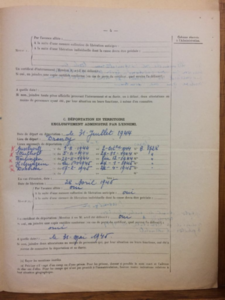
Attachment No. 20 – Application for recognition of Cadok Dawidzona as a Political Deportee
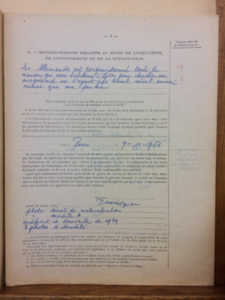
Attachment No. 21 – Application for recognition of Cadok Dawidzona as a Political Deportee

Attachment No. 22
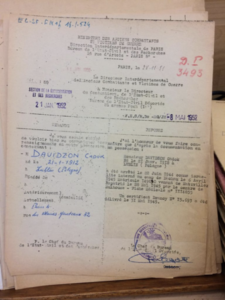
Attachment No. 23 – Information about Cadok’s internment
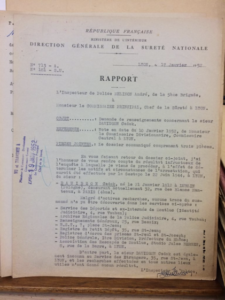
Attachment No. 24 – A report about Cadok
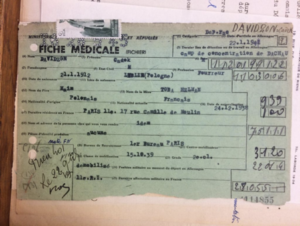
Attachment No. 25 – Cadok Dawidzon’s medical records

Attachment No. 26 – Confirmation of Cadok Dawidzon’s address
BIBLIOGRAPHY
- Archive N° 1753 – Akta stanu cywilnego Okręgu Bożniczego w Lublinie [Civil status records of the synagogue district of Lublin] (birth certificate records almost complete)
- Archive N° 1753 22 – Akta miasta Lublina z lat 1317-1950 [Acts of the city of Lublin from the years 1317-1950]. ((population registers kept in very small numbers, only population registers from the 19th century and an incomplete collection of registration registers of houses in the Lublin area from the 30s-50s of the 20th century)
- Archive N° 37 – Akta miasta Kazimierza Dolnego z lat 1555-1950 [Acts of the town of Kazimierz Dolny from 1555-1950] (records of the population not preserved)
- Fonds d’archives n° 403 – Urząd Wojewódzki Lubelski z lat 1919-1939 [Lublin Voivodship Office from 1919-1939] (lists of members of the Jewish faith community of
- Lublin, preserved for only a few years, the 20s-30s of the 20th century)
- Archive N° n° 410 – Starostwo Powiatowe Lubelskie z lat 1919-1939 [Lublin District Starosty for the years 1919-1939] (lists of members of the Jewish faith community
- in Lublin, passport records, for the the 20s-30s of the 20th century)
- “René Goscinny” French High School
- Theatre NN – History of the Jews of Lublin
- Wikipedia – History of the Jews of Lublin
Contributor(s)
Anna, Kaja, Judyta, Kacper and Katarzyna, all students from the Lycée Międzynarodowego Liceum « Paderewski » in Lublin, under the direction of their history teacher Anna Nadolska.


 Français
Français Polski
Polski








